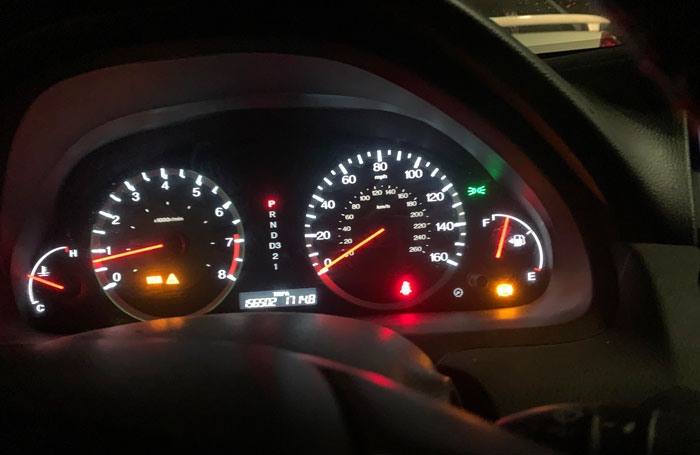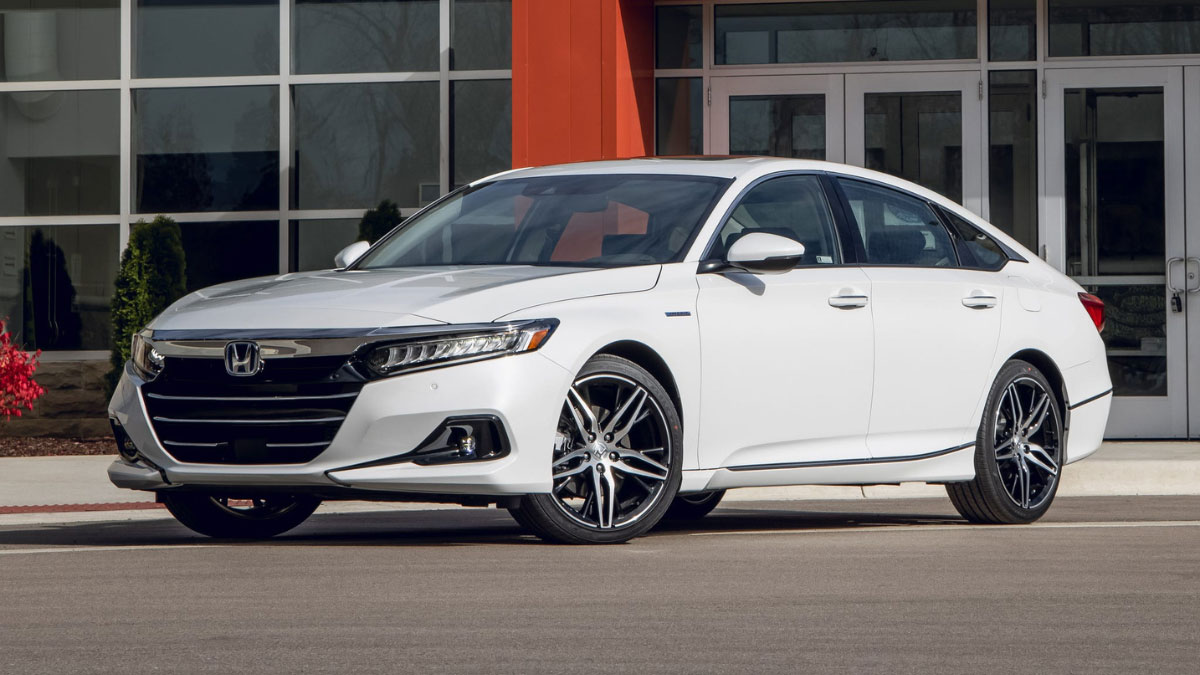So, you’re cruising down the road in your trusty Honda Accord, feeling like you own the world, when suddenly, a pesky little light pops up on your dashboard. Yep, you guessed it – the dreaded “Check Fuel Cap” message. Before you start panicking and thinking your car has developed a sudden obsession with caps, let me assure you, it’s not as dramatic as it sounds.
I’ll let you in on a little secret about this quirky feature in your Honda Accord. Understanding the “Check Fuel Cap” warning is like deciphering a cryptic message from your car. It’s not about your cap’s fashion sense; it’s more about your car’s way of telling you to tighten that cap and keep the fuel system happy. So, grab your cap, give it a twist, and let’s jump into the intriguing area of why your Honda Accord cares so much about its fuel cap.
Understanding the “Check Fuel Cap” Warning on Honda Accord
Ah, the infamous “Check Fuel Cap” message on the dashboard of your Honda Accord. It’s like the car’s way of saying, “Hey buddy, did you forget something?” But fear not, it’s not a red alert; it’s more like a gentle nudge to tighten that fuel cap and keep things running smoothly.

Let’s break it down in simple terms, shall we? Here are the key details you need to grasp:
- Check Fuel Cap Message: This notification typically pops up when your fuel cap isn’t firmly secured. It might seem like a tiny issue, but it plays a crucial role in maintaining your car’s fuel system.
- Importance of Tightening: Ensuring your fuel cap is properly tightened prevents fuel vapors from escaping and keeps the system pressurized, aiding in optimal fuel efficiency.
Let’s tackle this in a few easy steps:
- Stop and Check: The moment you spot the message, pull over when it’s safe to do so and inspect the fuel cap.
- Tighten the Cap: Give the fuel cap a good twist to secure it in place. You might hear a reassuring click when it’s properly tightened.
- Restart the Engine: After tightening the cap, restart your Honda Accord. The message should disappear if the issue was indeed the loose fuel cap.
Common Causes for the Fuel Cap Alert
Unraveling the mysteries behind the “Check Fuel Cap” alert on your Honda Accord’s dashboard can feel like cracking a secret code—or at least that’s how it seems to me! Let’s jump into the common reasons why this sneaky warning keeps popping up.
Improperly Secured Fuel Cap
Ah, the classic mistake we’ve all made—the fuel cap left loose or not tightened enough. It’s like forgetting to close the cereal box all the way; things just won’t be right! When the cap isn’t sealed snugly, it messes with the pressure in the fuel system and triggers that pesky alert.
Damaged or Worn Fuel Cap
Picture this: your fuel cap, worn out from all those years of faithful service, decides it’s time to retire. Just like a trusty pair of shoes that have seen better days, a damaged or worn fuel cap can’t do its job properly. Cracks, dents, or general wear and tear can lead to leaks that set off the warning signal.
Issues Within the Fuel System
I’m no detective, but if the fuel system itself is acting up, it’s bound to cause trouble. Whether it’s a faulty seal, a leak elsewhere, or a gremlin messing with the inner workings, any hiccup in the fuel system can trigger the “Check Fuel Cap” notification. It’s like a mini soap opera in your car’s engine bay!
Steps to Troubleshoot the “Check Fuel Cap” Warning
Ah, the infamous “Check Fuel Cap” warning, akin to cracking a code! Let’s jump into some antics to troubleshoot this mystery.
Inspecting the Fuel Cap for Damage
It’s showtime! Check the fuel cap for any wear and tear, cracks, or signs of damage. This cap is not starring in a horror film; it needs to seal tight to keep the fuel system happy.
Resetting the Warning Light
Lights, camera, action! Time to steal the show by resetting the warning light. A few simple taps or twists could have it disappear faster than a magician’s trick.
When to Seek Professional Help
As a seasoned “Check Fuel Cap” expert, I’d suggest seeking professional help if you’ve tried all the DIY tricks in your automotive arsenal but the warning light is still winking at you like it’s in on a secret joke. Here are the telltale signs that it’s time to throw in the fuel-soaked towel and let the pros take the wheel:
- Persistent Blinking:
- If the “Check Fuel Cap” light refuses to play hide-and-seek and keeps popping up even though your best efforts, it might be time to let the pros unravel this vehicular enigma.
- Strange Noises:
- Hear any unusual hissing or gurgling sounds from the fuel system? That’s your car trying to communicate with you in its cryptic language. It’s saying, “Help, I need a mechanic!”
- Fuel Smell:
- If you catch a whiff of gasoline lingering around your car like it’s planning a solo road trip, it’s definitely a sign to get a professional opinion.
- Leaking Fuel:
- The only thing that should leak from your car is your favorite playlist, not fuel. If you spot any suspicious puddles under your vehicle, it’s time to wave the white checkered flag and call in the pros.
Remember, when it comes to your Honda Accord and its “Check Fuel Cap” warning, sometimes it’s best to let the real fuel system detectives – the professionals – crack the case for you.
Tips to Prevent Future Fuel Cap Issues
I’m no magician, but I’ve got some tricks up my sleeve to make sure you’re not haunted by the “Check Fuel Cap” ghost again. Here are some tips to keep your Honda Accord purring like a content kitty in the sunshine:
- Tighten It Right: When you twist that fuel cap, channel your inner superhero strength, but be gentle. It’s like finding the perfect balance between Hulk and delicate flower.
- Give it a Check: Make it a habit to inspect your fuel cap regularly. Don’t just glance at it; give it a proper once-over. We’re talking inspection, not a casual encounter.
- Cleanliness is Next to Car-iness: Keep your fuel cap and its surroundings clean. No one likes a dirty cap. Show it some love, give it a spa day once in a while.
- Don’t Ignore the Warnings: If your car decides to play detective and flashes the “Check Fuel Cap” signal, don’t ignore it and hope it goes away like a bad first date. Investigate, tighten, and show that ghost who’s boss.
- Pro Help: When all else fails, don’t be a hero. Swallow your pride like a lumpy pill and seek professional help. They deal with fuel cap mysteries all day; it’s like their favorite TV show.
Remember, prevention is the best medicine for your car. Keep that fuel cap happy, and you’ll be cruising smoothly down the road without a care in the world.
Conclusion
Well, folks, there you have it – the lowdown on the infamous “Check Fuel Cap” warning in your beloved Honda Accord. Remember, keeping that fuel cap snug as a bug is crucial to avoid any hiccups in your fuel system’s performance. If all else fails, don’t be a hero – call in the pros. And hey, don’t forget to show that fuel cap some love with regular check-ups and a good ol’ clean. Stay on top of those warning signs, tighten that cap like your life depends on it, and you’ll be cruising down the road in your Accord without a care in the world. Cheers to a smooth ride ahead!
Frequently Asked Questions
Is it safe to drive with the “Check Fuel Cap” warning on in my Honda Accord?
Yes, it is generally safe to drive with the warning on, but it’s essential to address the issue promptly. You can check if the cap is tight and see if the warning light goes off. Professional help is recommended if the problem persists.
Why does my Honda Accord display the “Check Fuel Cap” message?
The warning is triggered by a leak in the evaporative emissions system, often caused by a loose fuel cap. Ensuring the cap is securely fastened can resolve the issue.
How can I determine if my Honda Accord’s fuel cap needs replacing?
A loose or improperly sealed gas cap is a common indicator of a faulty fuel cap. If it doesn’t tighten securely, it may allow contaminants to enter the fuel system, leading to potential issues.
Why is my Honda Accord reminding me to tighten the fuel cap?
The message indicates that your fuel cap is either missing or not tightly secured. Make sure to reinstall the fuel cap correctly and ensure it clicks securely in place.
What should I do if my Honda Accord keeps displaying the “Check Fuel Cap” warning?
If the notification persists despite tightening or replacing the fuel cap, it’s advisable to seek professional assistance. The issue might be related to components like the purge valve in the EVAP system.

